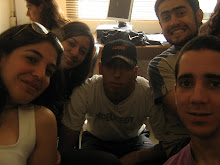Marshall McLuhan, once referred to as the "Oracle of the Electronic Age", is perhaps best known for his phrase turned into book title, The Medium is the Message . McLuhan rose to fame as a "guru" of media culture.
McLuhan's contribution to the field of communication study was widely acclaimed by popular standards while simultaneously being dismissed by those in academic circles. According to Rogers, "During his lifetime McLuhan did more than any other individual to interest the general public in communication study" . Gary Wolf, writing in Wired magazine, painted a portrait of McLuhan as "a critic and an academic rebel", prone to incredible pronouncements and humorous quips.
The underlying notion is that the message is greatly impacted by the delivery system. If the content is obliterated by the channel, "what" we say is of little importance-only "how" we chose to deliver it. McLuhan's belief in technological determinism is obvious by his phrase, "we shape our tools and they in turn shape us"McLuhan believe that the print revolution begun by Gutenberg was the forerunner of the industrial revolution. One unforeseen consequence of print was the fragmentation of society. McLuhan argued that readers would now read in private, and so be alienated from others. It created the portable book, which men could read in privacy and in isolation from others" . Interestingly, McLuhan saw electronic media as a return to collective ways of perceiving the world. His "global village" theory posited the ability of electronic media to unify and retribalize the human race. What McLuhan did not live to see, but perhaps foresaw, was the merging of text and electronic mass media in this new media called the Internet.
McLuhan is also well known for his division of media into hot and cool categories.
Hot media are low in audience participation due to their high resolution or definition.
Cool media are high in audience participation due to their low definition (the receiver must fill in the missing information). One can make an argument that the Web results by combining two cool media into a new synthesized, multimediated experience. If print is hot and linear, and electronic broadcast media are cool and interactive, hypermedia on the Web is "freezing" and 3-D.
Posted by (E.T.)


Good addition to the blog. Interesting and it adds credibility to your work. Please mention your source so you can not be accused of plagiarism, and, also, so people can access the source themselves, if they so wish.
ReplyDelete